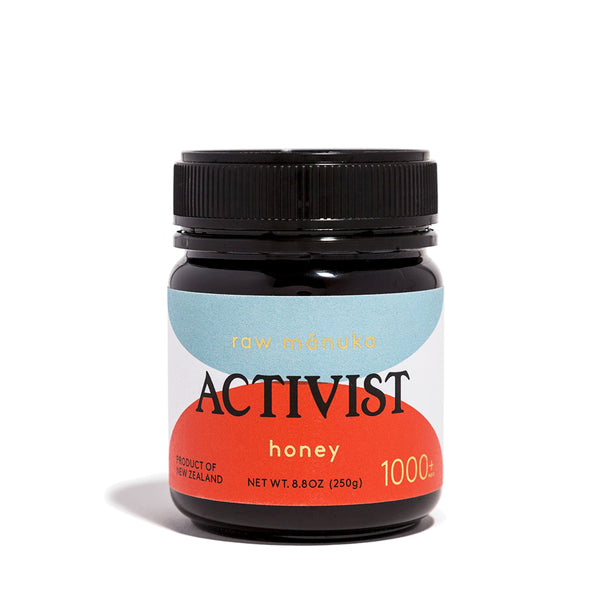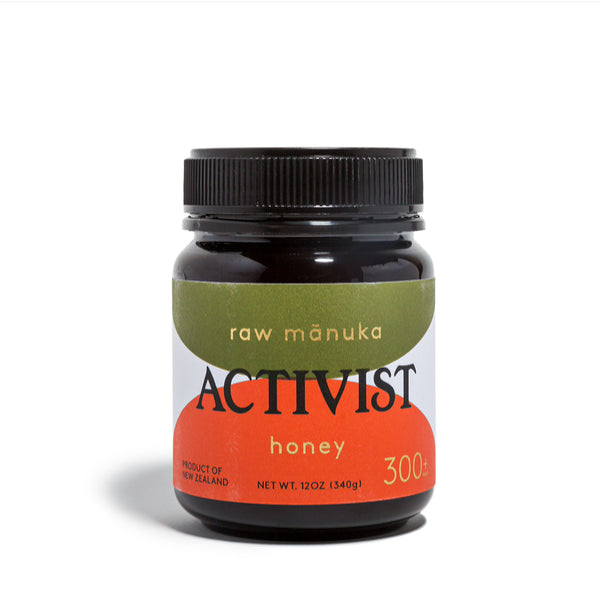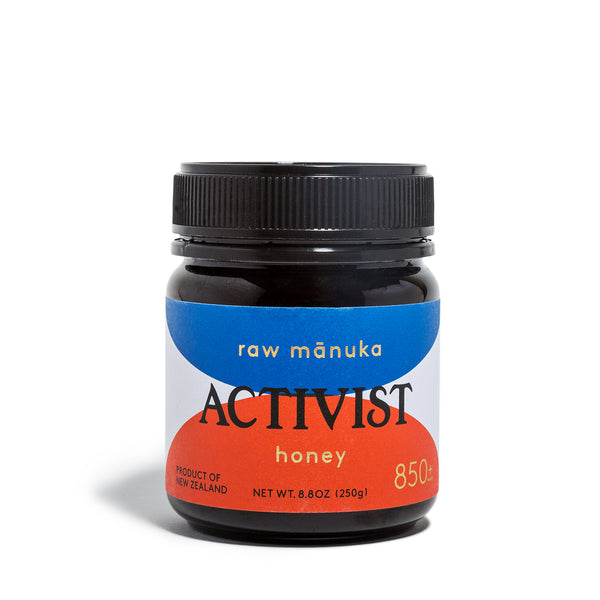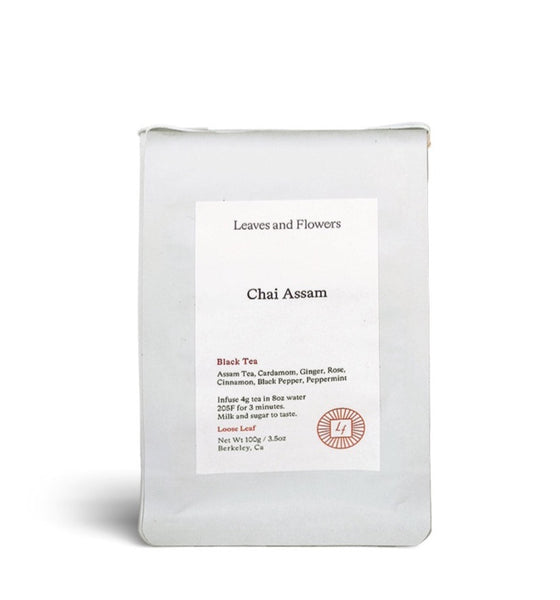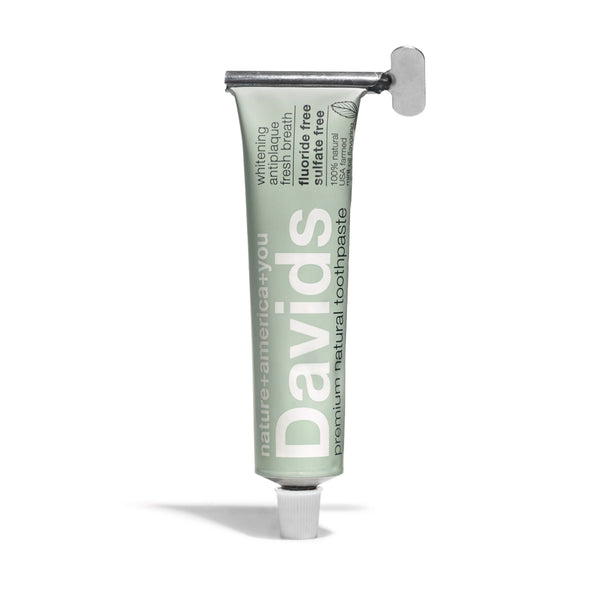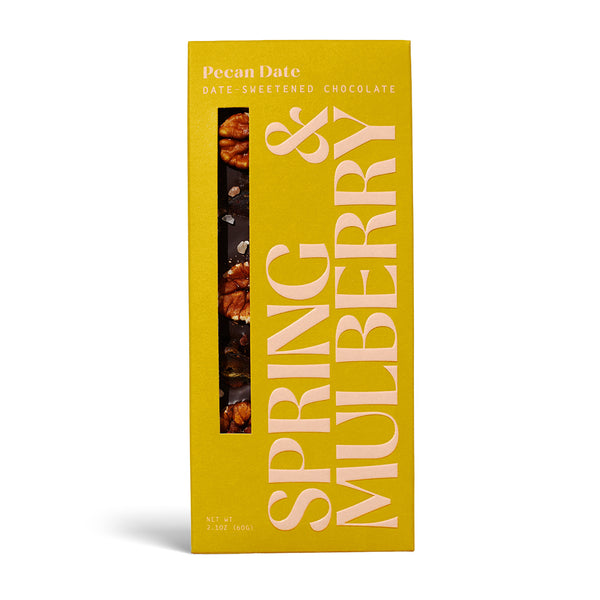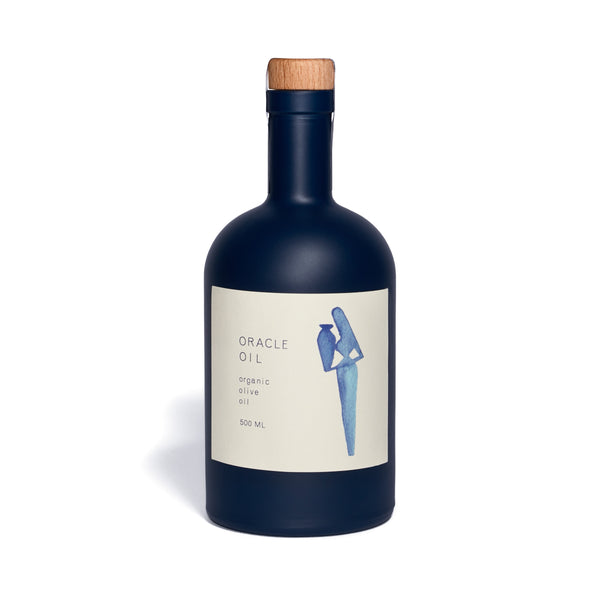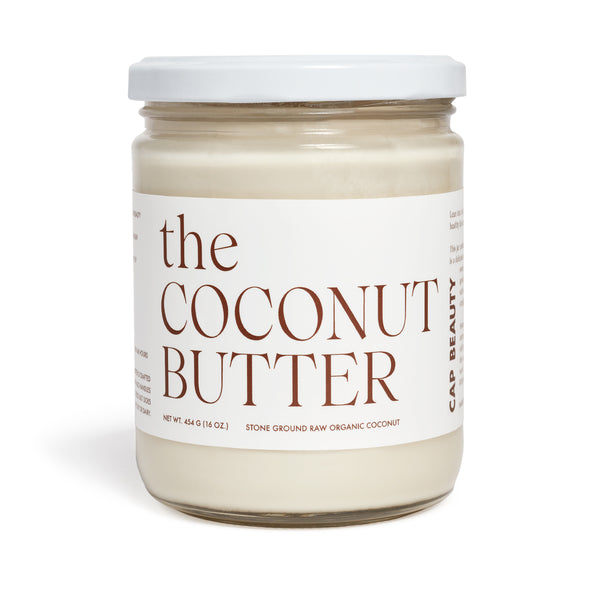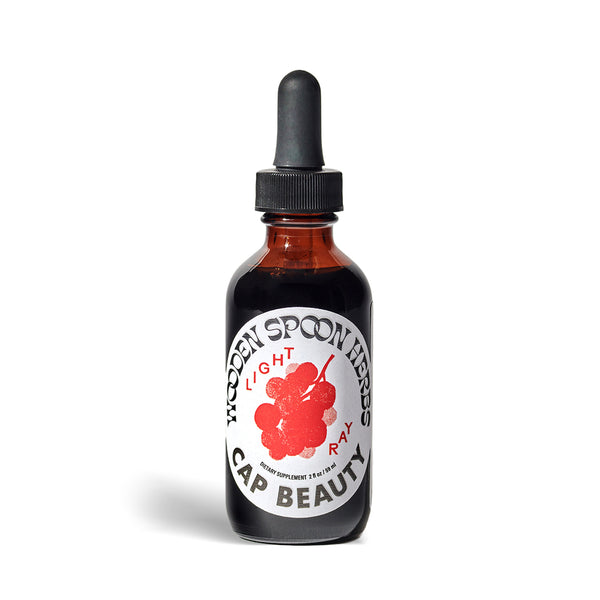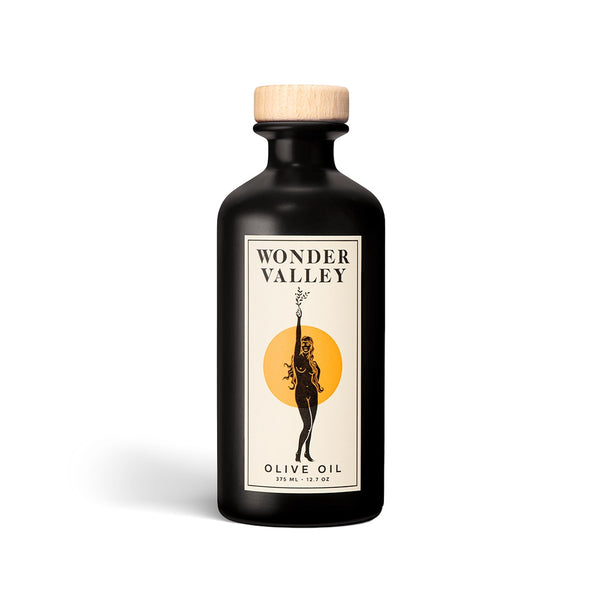What is your food philosophy?
No one diet is right for everyone all the time. Every food philosophy has its dogma. Change is the real secret of a successful life. The ability to adapt to new environments, lifestyles, and events that may arise is key. It is the continuous change that will keep our bodies healthy.
How do you start your day?
I begin my day journaling, a practice I’ve cultivated for over twenty-five years. Even if it’s only for three minutes a day, I use journaling to bring myself back to my body, to ground myself in the day before me with gratitude and remind myself why I am here.
After that, I brush my teeth with Weleda salt toothpaste which I'm entirely obsessed with. Then tongue scraping, which is now second nature for me; I've done this for over twenty years and I've noticed an improvement in my oral hygiene, especially with breath odor. Lastly, I take my supplements: a daily Ritual vitamin, Liposomal vitamin C, and Lion's Mane.
Then, I usually need to eliminate my bowels and pee. I use this routine bodily function as an opportunity to optimize whatever experience I am inside of. So, I connect with the release of my pelvis, take a deep breath, and jump into my body to be there and to feel what is going on in my system.
Elimination is happening every day. So often, we are only focused on our bodies when we are experiencing a UTI, digestive issue, or discomfort. That relationship can be very harsh and intense, so I try to cultivate care, compassion, and gratitude and lean into feeling my body when my body is working well. I often think we take our bodily functions for granted, so being present during routine bodily functions (such as pooping and peeing) can be very helpful in connecting to our body in a unique and meaningful way.

What's always in your fridge?
Salty. Sour. Sweet. Earthly. Flora. And fungi. I'll explain...
Salty: umeboshi plums
Sour: fermented veggies and yogurt
Sweet: all varieties of berries; my favorites are Josephine raspberries
Earthly: seasonal and local vegetables
Flora: chamomile, yarrow, oregano and squash blossoms
Also, goat cheese, makings for sandwiches and Poppi, a pre-biotic beverage.
What's always in your pantry?
Rancho Gordo beans, fonio, always fonio. Fonio is a nutrient-dense grain from West Africa; it has a nutty and earthy taste profile. The grains themselves cook like couscous and put quinoa to shame. Also, fonio is gluten-free, so it's an excellent option for those with celiac or digestive disorders. Other pantry staples include good quality olive oil and The CAP Coconut Butter.
What is your practice around food cravings?
The trick is to find out what our cravings are trying to tell us. Most of the feelings and processes of our body are for the purpose of keeping it functioning. In my experience, cravings fall into three categories:
1. Addiction and or allergies
2. Discharge: When the body undergoes a cleansing cycle after beginning a new diet, often cravings get worse before they get better.
3. Nutrient Imbalance: I have also noticed that cravings for sweets, especially when accompanied by fats, can signal a minimal protein deficiency.
What does "food as medicine" mean to you?
My work centers on integrative Nutrition as a form of health care. Unfortunately, integrative Nutrition is an underutilized intervention in the health care system. However, in most traditional medical models, food plays an integral part in health and even common foods are used for medical purposes.
I think it is critical to remember that any food, remedy, herb, or drug, even a healthy food, can cause or heal a disorder. The more that you understand your body and how it functions, the more pro-active you can feel in your body and the better decisions you can make about your health.
My favorite go-to snacks?
My favorite routine snack is The CAP Coconut Butter. It is my everything spread. I use it on sweet potatoes, rice cakes, sourdough bread and fruits. Also, I love it in smoothies and in my Matcha tea. On the days leading up to my luteal phase, I typically take one tablespoon to soothe any sweet cravings. Coconut butter has a lot of good healthy fiber, which helps aid weight loss, decrease cholesterol and improve bowel functioning.
What is the importance of routine when it comes to food?
A routine is important because it is something you do daily and consistently to strengthen your health over time. Also, I think having a routine fosters a relationship and connection to your body in a unique and meaningful way.

What tips do you have for building a solid routine?
Building a solid routine is about acknowledging your limitations, circumstances, and knowing what you realistically have time to do.
I find an underutilized routine is using our bodily functions to check in with our body, such as pooping and peeing. I find this simple act of awareness does wonders to connect with how our body is feeling.
For me, a routine is meant to optimize whatever experience I am currently feeling and return to my body in a unique and meaningful way. I believe understanding how to optimize our body and engage in soothing practices and routines is the basis of feeling well.
How did you develop the Food + Mood chart?
The food and mood chart is based on: The Five Phase Theory from Traditional Chinese Medicine (TCM), the law of remedies, the newer science of gut-brain connection and my personal observations.
Although still a new field of study, the science coming out about the connection between our gut and brain and mood and psychosomatic illness is showing us that what we eat has profound effects on our mood.
My Food and Mood chart is a map of possibilities, not fixed or immutable facts. Therefore, everyone who uses the chart must experiment to see where, when, and to what degree these guidelines apply to their personal condition.
But personally, in my seven years of using the Food and Mood chart, I have seen it work rather consistently. My purpose here is to show how we can continuously use food to heal ourselves in simple and accessible ways.


What is the Five Phase Theory?
The Five phase theory, also referred to as Wu Xing, has been a part of traditional Chinese medicine for centuries. Each phase is associated with: a season, organ system, color, flavor, mood, food, activity and emotion. If you want to find out what you’re doing in terms of the five-phase theory of energetics, it’s a good idea to consult a traditional Chinese medicine physician who is familiar with that system.
How does our mood affect our food choices? How does food affect our mood?
The notion that feelings are stored in the body instead of in the mind has become the basis for successful holistic therapies such as trauma therapy, Rolfing and bioenergetics.
But to offer up some examples: Crankiness has been seen to cause fluctuations in blood sugar levels. Lack of sleep is associated with difficulty concentrating and impaired cognitive functioning slows down our tissue repair functions. Also, chronic stress or expending energy beyond your biochemical limits can cause anxiety and depression.
Our bodies crave salt, sugar, dairy, meat and other fast-burning energy sources because those foods release a flood of feel-good chemicals such as serotonin and dopamine that regulate our nervous systems and restore cortisol levels.

How do we practice feeling into the interplay of food and mood?
Notice if you experience a change in your diet when you're feeling emotional stress, such as anxiety or anxiousness. Or, what food you do you reach for when you experience lack of sleep. How do your preferred foods or beverages change during your different emotional states? Awareness is key.
From inquiry and curiosity, we can start to identify that our mood is often the first indicator that something is out of balance with our whole body system.
In most traditional medicine systems, food plays an integral part in health and is often used for medicinal purposes. Although food is not the ultimate panacea, new science is starting to show how functional foods can be helpful for many modern chronic ailments and increase our overall mood.
What are the first steps to eating in more harmony with our emotions?
These are some of my general principles to orient yourself by:
Chew every bite of your food until it is thoroughly insalivated. Digestion of carbohydrates begins in the mouth. If the food is not in the mouth long enough for the enzymes to do their job, the burden will fall on your pancreatic enzymes.
Enjoy your indulgences
Pay attention to how your body works and how food works in your body. Begin to develop awareness of your body and consider how you want to feel in your body.
A person with a uterus can track their period from bleed to bleed. A lot is happening with our hormones from week to week. So by developing more body literacy about how our body works from bleed to bleed, we can make more informed decisions about our diet and lifestyle routines.

What else is important for us to know?
Healthy food doesn’t heal. If appropriate, it only allows the body to heal itself. Or if inappropriate, it may prevent the body from doing so. No panacea or single substance will bring eternal deliverance from pain, anxiety or stress. There are only ways of rebalancing the complex system that is our body, and It is up to each individual to discover and make use of what will be relevant and helpful to us.
The go-to meal that you make for yourself more often than not?
I love fonio grain bowls with or without vegetables. I usually make single item foods for lunch and dinner. A bowl of fonio, a bowl of soupy beans with a slice of sourdough bread with an unreasonably long, indulgent spread of butter.
I’ve also noticed that I crave different foods throughout my menstrual cycle and change the foods I eat depending on which phase I am in.
How do you end your day?
I keep 5-7 books stacked like a totem next to my bed and I reserve the evening for reading. I love paperback books and anything by Bell Hooks, Sonia Sanchez, Octavia Butler or Osho.

STEAMED FONIO
There are different instructions on how to cook fonio. I prefer to cook it like quinoa, more steaming than boiling, because the process of steaming fonio retains its earthly flavor profile.
Serves 1-2
By Selena Ayala
1/2 cup of fonio
1 cup of water
1 tablespoon of oil
Pinch of salt (personal favorite is the CAP Pink Mountain)
In a pot with a fitted lid, coat 1/2 cup of fonio with 1 tablespoon of oil. Then add 1 cup of water and bring to a boil. Next, add a pinch of salt, stir, cover, and turn onto low heat for 1 minute. Lastly, turn off the heat and let it sit covered for about 4 minutes. Fluff with a fork and enjoy!


